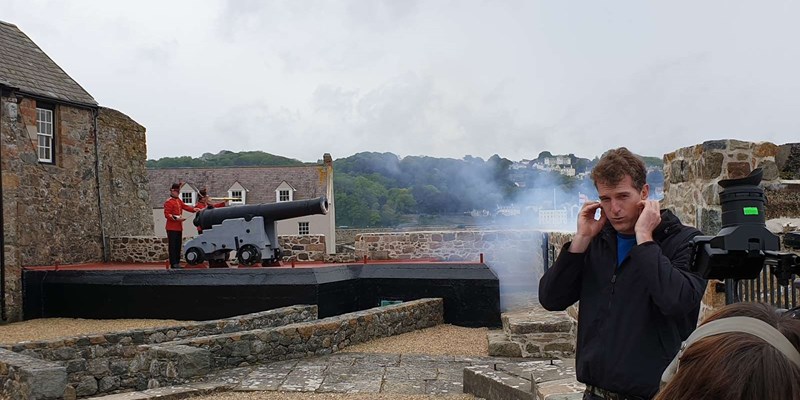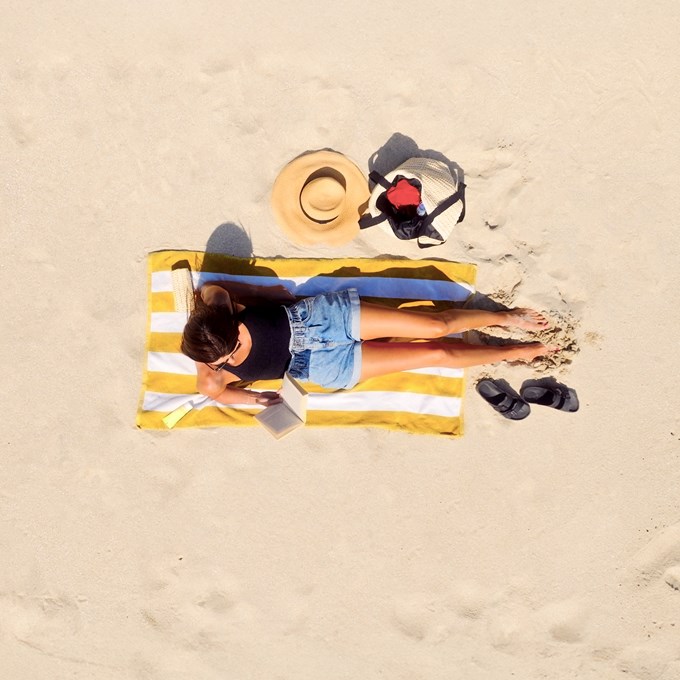*This article was originally posted in 2019*
As part of VisitGuernsey’s work in promoting Guernsey and its Bailiwick of islands, we work with a wide range of journalists and film crews who produce articles and videos on the island.
In May, VisitGuernsey enjoyed working with TV adventurer and historian Dan Snow, who had accepted an invitation to visit Guernsey during the 2019 Heritage Festival and film at a variety of locations around the island during his three day visit, which coincided with the Liberation Day celebrations.
His first stop was to visit the recently renovated Hauteville House, which was the home of the famous French poet and writer Victor Hugo. During the 15 years that Hugo lived in the house he completed some of his most famous works, such as Les Misérables and Toilers of the Sea, the latter of which was inspired by Guernsey and local seafaring folk.
As well as a famous writer, Hugo was also an accomplished artist, and he spent considerable time decorating and furnishing his house with an eclectic mix of reclaimed furniture from churches and stately homes, as well as bespoke artwork, much of which was painted by Victor himself.
Dan spent a couple of hours at the house, learning more about the history of Victor Hugo and admiring the skill and craftsmanship that had gone in to the recent faithful restoration of the house, ensuring that it remains as Hugo designed and curated it. As Dan said of Hauteville House, “it is a treasure of international importance”.
The next notable stop of Dan’s tour of Guernsey was the unique Little Chapel. One of Guernsey’s most famous tourist attractions, the Little Chapel was the work of Brother Déodat, who built the chapel in the grounds of the monastery at Les Vauxbelets in St Andrews as a homage to the famous grotto and basilica at Lourdes in France.
Brother Déodat decorated the chapel in broken pottery and ceramics, creating an enduring work of art that is now almost 100 years old. Dan Snow was fascinated by the “eccentric, tiny, joyful space” as he explored the grotto that runs from the side of the altar in the chapel to an exit in the lower garden.
From the Little Chapel, Dan headed to the south coast of St Martins to visit Moulin Huet Bay. Dan wanted to visit this particular bay because it was made famous when Pierre-Auguste Renoir stayed in Guernsey in September 1883. He famously painted 15 works depicting the bay, one of which is displayed in the National Gallery in London. Dan commented, “it is just as beautiful today as it was when Renoir painted it”.
As Guernsey’s Liberation Day celebrations were in full swing, Dan enjoyed spending the afternoon in the harbour town of St Peter Port. He watched the military vehicle and classic car cavalcade that winds its way from L’Ancresse Bay in the north of the island along the coast road and into the island’s capital, attracting thousands of visitors and locals alike who line the route as it drives past.
The Liberation Day celebrations concluded with a massive firework display launched from St Peter Port’s harbour breakwater over Castle Cornet, Guernsey’s largest heritage site and tourist attraction, which Dan visited the next morning.
With over 800 years of history, the castle has a lot to see within its walls, including five museums, each dedicated to different aspects of the castle and its military connections over the generations. Dan enjoyed exploring Castle Cornet and getting an appreciation for the different roles it has played during its rich history. One tradition that still takes place today is the firing of the Noon-Day Gun. This was originally fired as a curfew warning for the garrison stations at the castle, but in more recent times the firing is now done as a living history style tourist attraction.
From the 800-year-old fortification, Dan travelled across the island to visit one of the more recent fortifications that was built around 70 years ago during the German Occupation in WW2. Built on the southwest corner of the island on Pleinmont Point, MP3 Naval Observation Tower was one of the numerous range finding towers that were built during the five year occupation.
Dan was amazed by the sheer scale of the fortifications built on Guernsey as part of the Atlantic Wall project. “Wow, from the top of this tower you can see the whole of this coastline,” Dan commented whilst stood on the observation deck of the restored German tower which is open to the public.
The last main stop of Dan’s stay in Guernsey was another remnant of the occupation, but rather than a huge tower that dominates the skyline, this was a visit to the subterranean German Underground Hospital; the largest installation built in the Channel Islands by forced labourers during the war.
As Dan walked around the many kilometres of tunnels, he remarked; “The sheer scale of this complex at 75,000 square feet of tunnels, constructed by hand in just two and half years, is hard to imagine.”
At one point during his time in the tunnel, Dan observed a set of hobnail boot prints left in the concrete. “Fascinating traces of the German occupier preserved in the concrete decades after they were left here,” he commented. With the tour of the Underground Hospital complete, so was Dan Snow’s stay in Guernsey.
However, whilst he was here, he was also filming and researching for two articles on his time in Guernsey that will be published in the Telegraph in June, as well as some video edits and podcasts that will feature on the History Hits channels, so keep an eye out for these in the near future. It was a pleasure to welcome Dan Snow to Guernsey, and we hope to see him again soon.












